10 things you need to know before buying a standing desk
Want to upgrade to a standing desk? Here's what you need to know
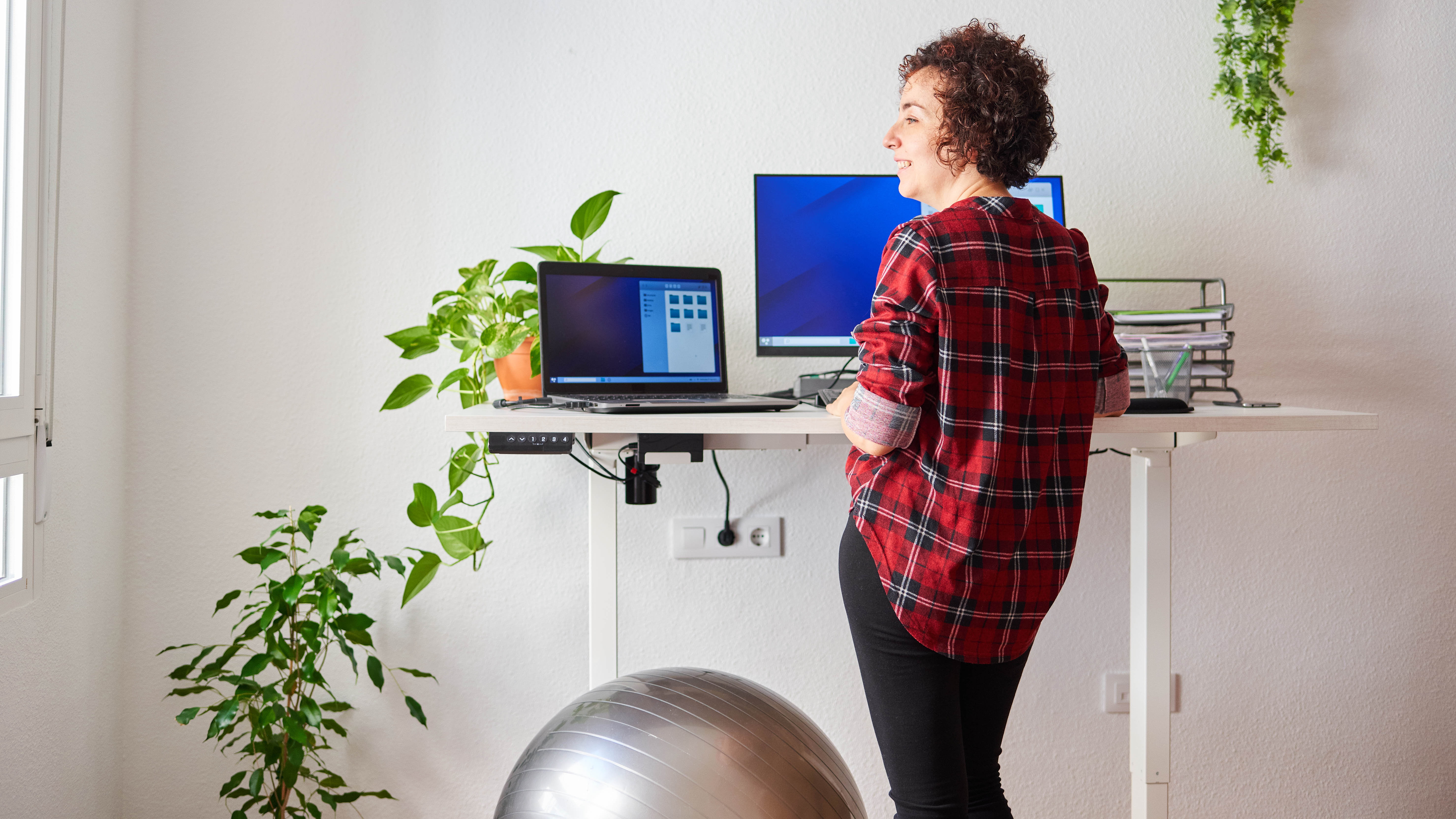
Most of us will have seen standing desks in action at the office. The low whirring sound and steady protrusion of a colleague still makes me crack a smile. In fact, this useful piece of furniture has grown so much in popularity that more and more of us are upgrading to one of the best standing desks at home. Why wouldn’t you when there’s so many benefits to standing while you work?
But, before you throw out your old desk, you should consider if a standing desk will be right for you. There are pros and cons to using this latest furniture-fad, which is why we’ve taken the time to break down what you need to know.
Here are 10 things you need to know before buying a standing desk.
What is a standing desk?
Before we go into the positives and negatives, we should explain exactly what a standing desk is. An electric standing desk is essentially a motorized desk which will automatically adjust its height at the touch of a button. This means you can use it while sitting or standing.
Most standing desks are customizable so you can choose the finish as well as any storage options. Some come with advanced features as well, such as reminding you when it’s time to stand, or letting you save preset heights.
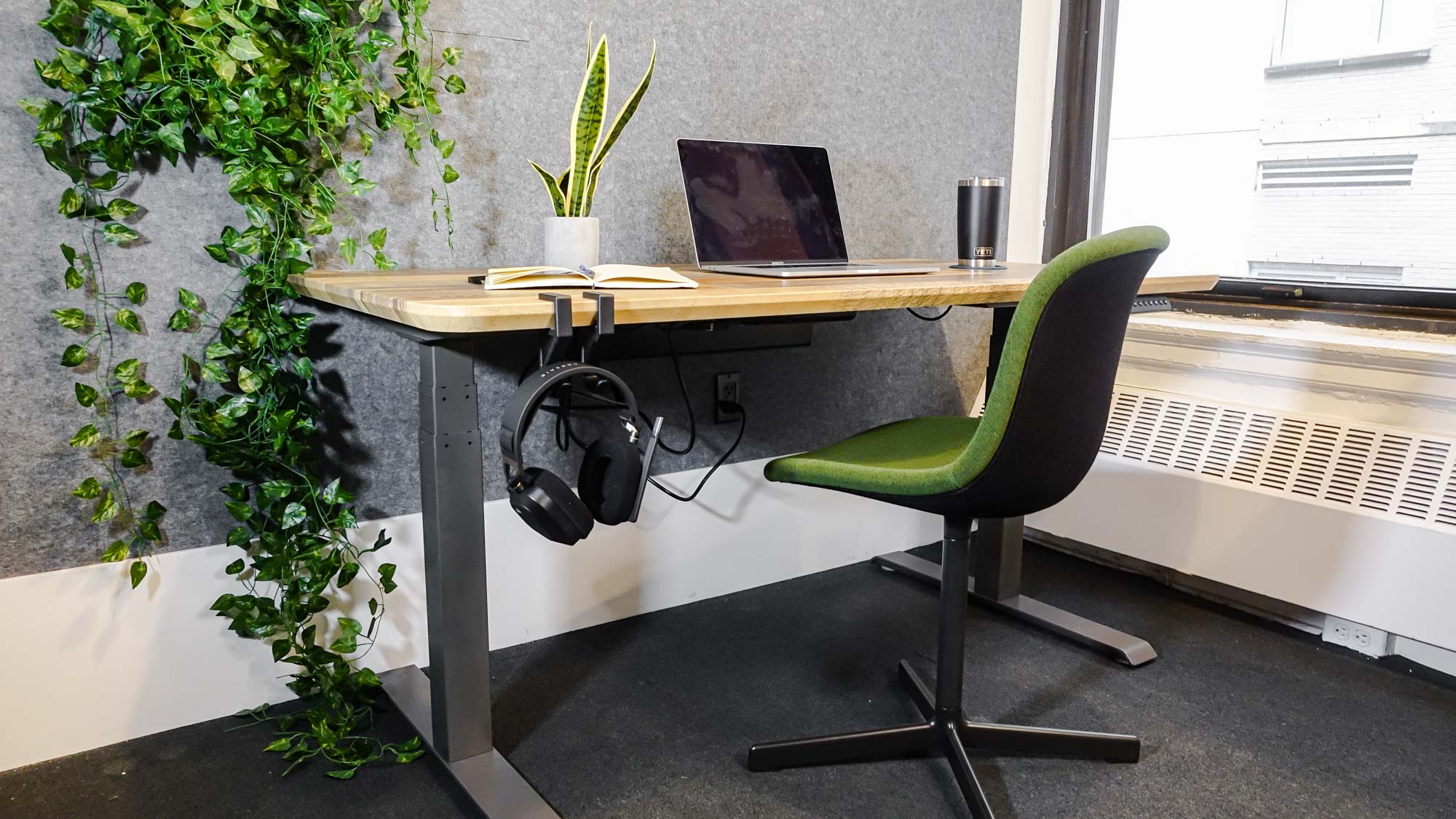
Manually adjustable standing desks also exist, such as the IKEA Trotten. Because these designs need to be adjusted manually, they're less convenient. But it also means they come at a more reasonable price.
10 things you need to know before buying a standing desk
1. It's not great to stay sitting — First of all, even if you’re using one of the best office chairs, it’s not great to remain sitting in the same position for extended periods of time. Sitting all day can lead to all kinds of bodily pains — most commonly back and neck-related. Plus, it will weaken your leg muscles and heighten the chances of obesity.
Sign up to get the BEST of Tom's Guide direct to your inbox.
Get instant access to breaking news, the hottest reviews, great deals and helpful tips.
By standing at your desk, you can increase your blood flow and get your leg muscles moving. Not to mention you can better engage your core.
2. Standing will not replace exercise — Standing does technically burn more calories than sitting, but not by much. So while a standing desk is better for your body, it’s worth flagging that this is by no means an effective replacement for regular exercise.
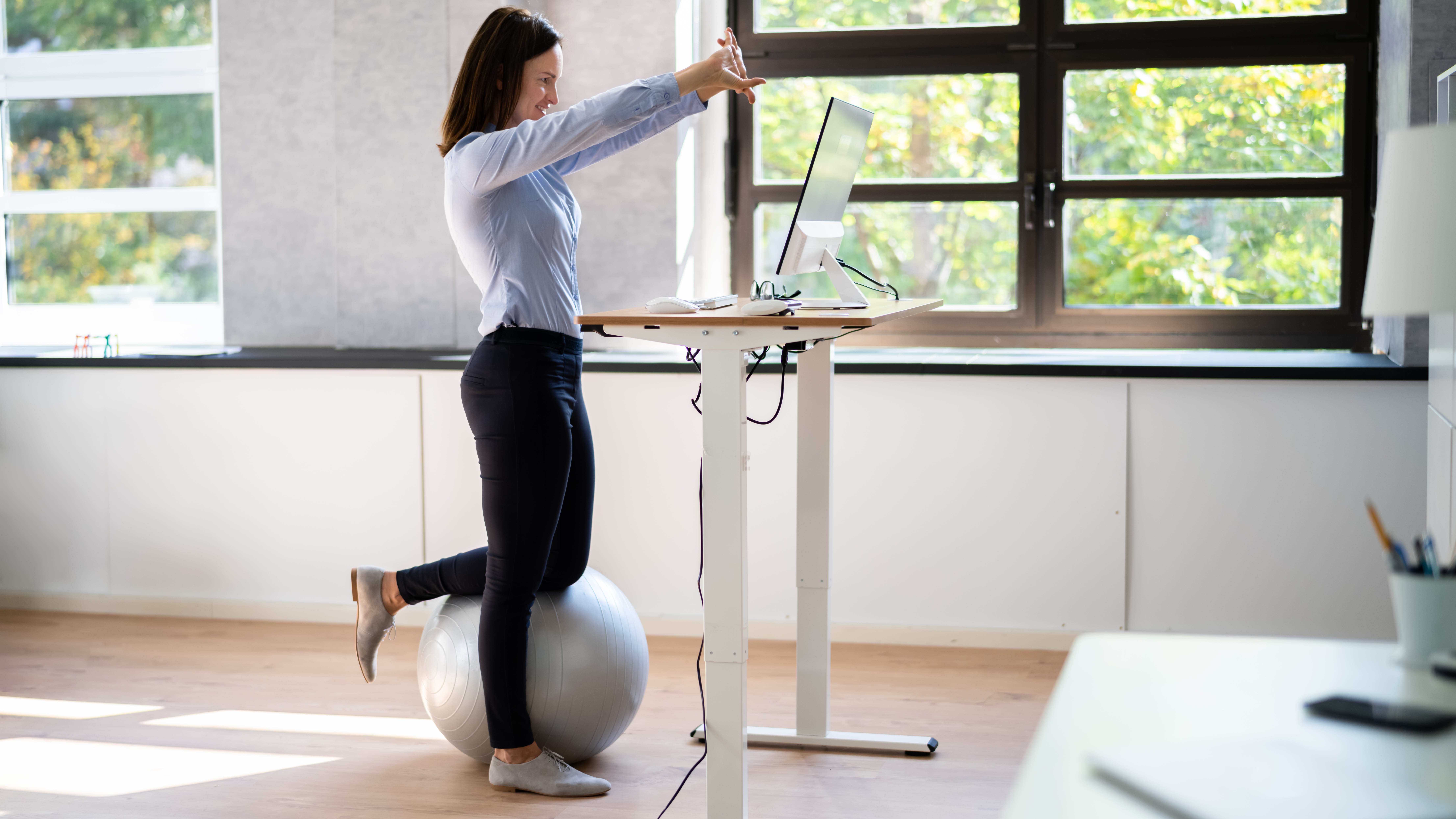
3. Standing improves your mood and energy levels — Research from the Take-a-Stand Project shows that using a standing desk also improves the user's mood, while other research concludes energy levels are increased too. This gives employees a more positive outlook during their day-to-day work life. By increasing your movement when standing, you encourage your energy levels, which in turn improves your mood.
4. Standing desks improve productivity — On top of this, research from Texas A&M University’s Health Science Center School of Public Health shows that using a standing desk increases productivity too. By stimulating the brain, standing desks can make the user more engaged and focused during working hours, resulting in higher productivity.
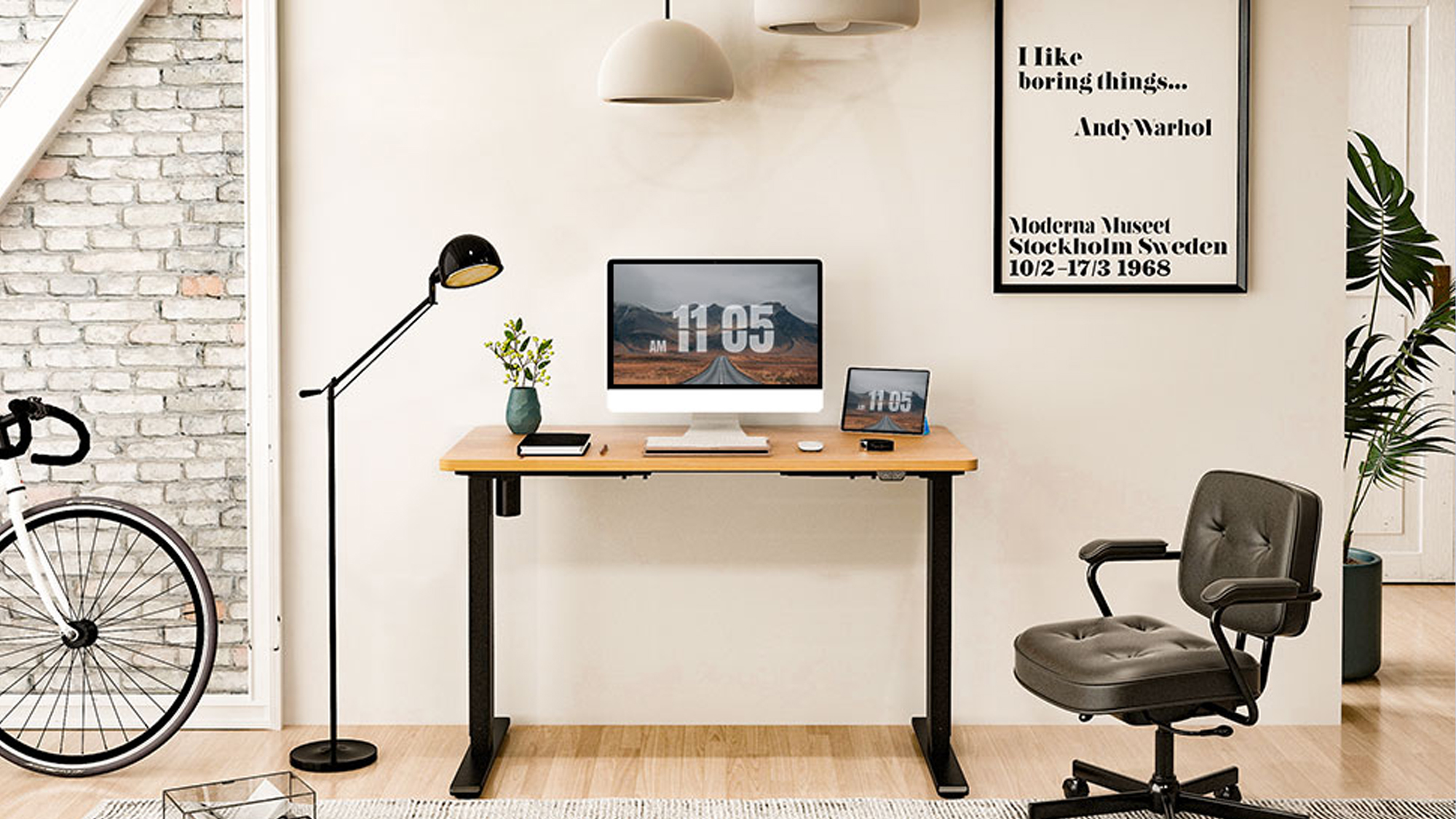
5. You might lose storage space — Generally speaking, electric standing desks don’t come with as much storage as you would find on regular desks. You can sometimes opt for a singular drawer to be added, or you can maybe fit a separate stack of drawers underneath, but they would need to fit below the minimum height. So, you need to be prepared that you might lose some drawer space if you upgrade.
6. Standing too much can also be bad for you — If you forget the time while standing and get carried away, this too can cause its own set of problems. Aches and pains can set in, especially around the feet, plus it can lead to you feeling tired.
In addition, standing for extended periods can also lead to bad posture, much like sitting. Once again, this can promote aches and pains.
For the best results, you want to achieve a healthy balance of standing and sitting. You should try to alternate between the two every one to two hours.
7. Your desk will need a powerpoint — Lots of people forget that electric standing desks are electric, so they do need access to a powerpoint. That means there will be another cable trailing along your wall and you will lose a power socket in your home office.
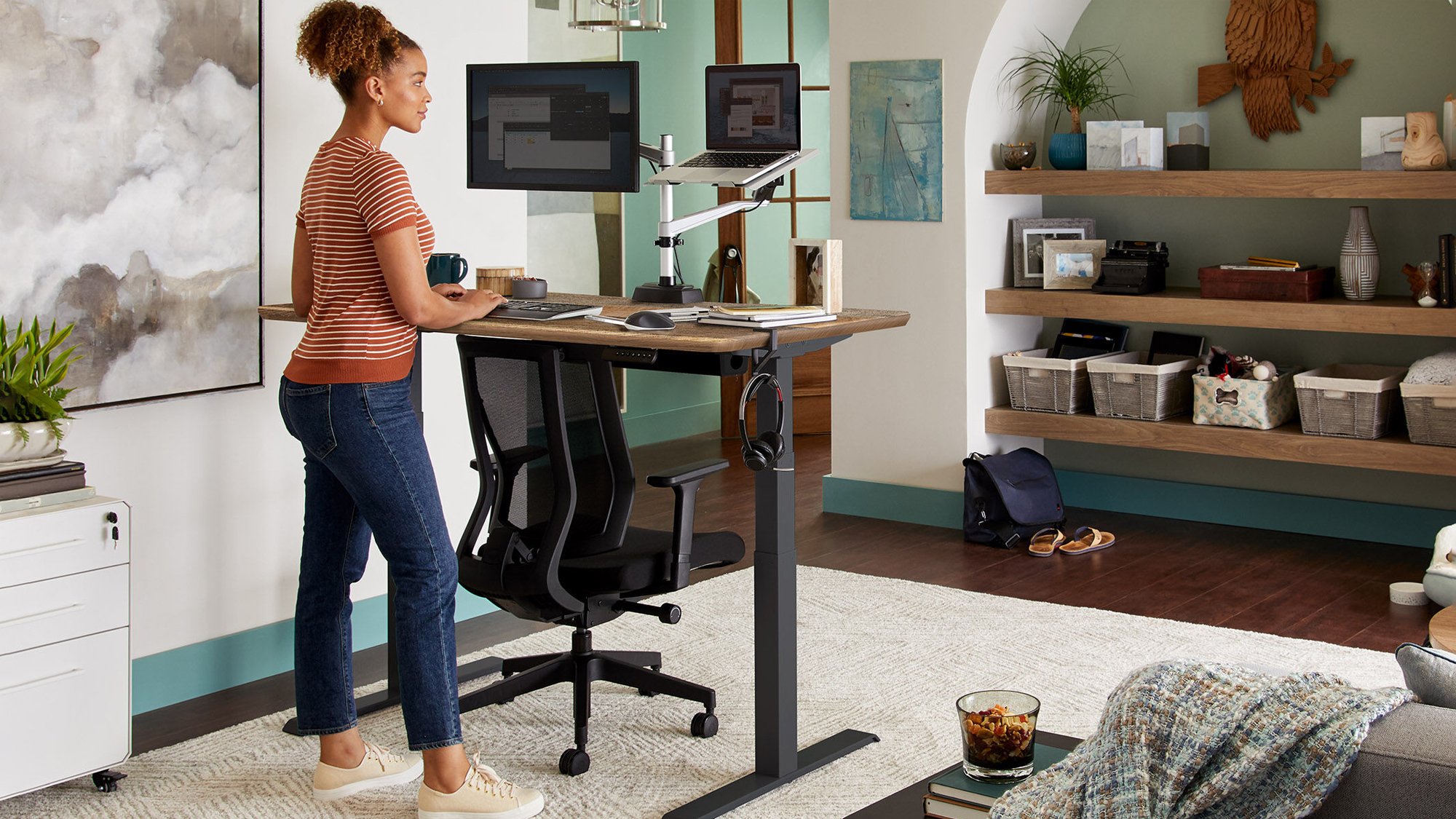
8. It may not be stable — Some electric desks wobble when adjusting, which isn’t ideal if it’s holding fragile items or a hot cup of coffee. Some also can’t hold excessive weight, which may limit what you can have on display. However, both of these issues can be resolved if you check the weight capacity in the specs and make sure you’re using one of the best standing desks.
9. You will need to prepare a space — Bear in mind that you need an area that can accommodate the adjustable height. As the desk raises and lowers, it cannot sit flush against the wall, and you may need to leave space to avoid any shelves or powerpoints.
Plus, cables can get pulled taut and pull things over on first use if you’re not careful. Make sure you raise and lower it slowly on first use to avoid this.
10. They're not the most attractive — Lastly, these desks won’t fit in with everyone’s aesthetics. They typically have an industrial look to them, with thick strong legs — so they won’t win any beauty contests. Plus, they’re generally more costly than a regular desk and can quickly grow further in price from optional extras.
Should you get a standing desk?
The benefits of standing desks on the body outweigh everything else in my opinion. While standing desks won’t appeal to everyone, they’re more useful and versatile compared to the traditional desk, and at least give you the option to stand.
True, standing desks usually don’t offer as much storage, and they might not be as pretty, but otherwise there’s little reason to argue against them.

Katie Mortram used to be a Homes Editor for Tom's Guide, where she oversaw everything from kitchen appliances to gardening tools, as well as smart home tech. Specializing in providing expert advice for cleaning and home manintenance, she now works as Household Advice Editor for Good Housekeeping.
